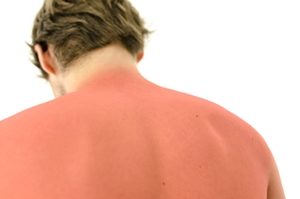Whether your work as a travel nurse takes you to Northern California, Nebraska or North Carolina, facing the sun is inevitable. Roughly 62 percent of travelers report getting sunburned while on vacation even though sunburn is preventable, a survey from Transderm Scop found. It’s important to remember that ultraviolet light can even cause sunburn on cool or cloudy days. Additionally, getting painful sunburn at least once every two years can increase the chance of getting skin cancer by three times, according to a study from MacMillan Cancer Support.
Here are the fundamentals to preventing and, if necessary, treating sunburn. Be sure to remind your patients to take these measures during the last few weeks of summer:
Prevention
- Eat antioxidants: Suggest foods high in antioxidants, such as dark chocolate, fatty fish, tomatoes, almonds, watermelon and carrots to naturally boost skin’s ability to protect against ultraviolet rays, according to the American Academy of Dermatology.
- Avoid sun exposure: The sun’s rays are the strongest between 10 a.m. and 4 p.m. Suggest that patients schedule outdoor activities at other times or limit the length of time they’re in the sun by seeking shade when possible.
- Don’t rely on a base tan: There is a long-standing myth that getting a base tan prevents future sunburn even though there isn’t supporting research to prove its effectiveness. Share with patients that the AAD recommended using a broad-spectrum sunscreen with an SPF of 30 or greater.
- Cover up: Patients should take extra steps to protect skin by wearing clothing that covers their bodies when outdoors. Tightly woven fabrics are the most effective, according to the Skin Cancer Foundation. To test for tightly woven fabric, hold clothing up to a bright light to see if any light shines through. The more light, the less protection from the sun.
- Don’t use 2-in-1 sunscreen: The U.S. Centers for Disease Control and Prevention does not recommend 2-in-1 products that combine insect repellent and sunscreen because sunscreen may need to be applied more frequently and in greater amounts than insect repellent. To get dual coverage, patients should apply sunscreen first, and then insect repellent. Additionally, repellent that contains DEET decreases the sunscreen’s SPF, so sunscreen coverage may need to occur more frequently.
- Wear sunglasses: The best eye protection comes from the highest-rated UV protection sunglasses. Darker lenses do not always correlate to increased UV protection, so patients should check the UV rating on the label before purchasing new sunglasses. Sunglasses that fit close to the face and have wraparound frames that block sunlight from all angles provide additional coverage.
Treatment
- Cool down: Once out of the sun, patients should take a cold shower or bath to soothe skin and rinse off any chlorine, salt water or sand that may be lingering and causing additional irritation. If patients take a bath, recommend they add a cup of whole oats to the cool water as a calming agent.
- Use pain relievers: Taking aspirin or ibuprofen will reduce redness, swelling and discomfort. As your patients’ skin heals, corticosteroids can be applied to the sunburn to help control itching during the healing process. Corticosteroids are often combined with pain relievers.
- Increase water intake: Because sunburn draws fluid away from the skin’s surface and the rest of the body, remind patients to drink extra water to stay hydrated.
- Moisturize: Lotions that contain aloe vera or soy help soothe sunburned skin. Over-the-counter hydrocortisone creams are effective for spot treatment on areas that are especially uncomfortable. Make sure patients do not treat sunburn with “-caine” products, such as benzocaine, because they may cause further skin irritation or an allergic reaction.
- Allow blistering: Stress to patients that they should not pop blisters if they form, as blisters develop to help skin heal and to keep out infection. Blistering skin indicates a second-degree sunburn.

